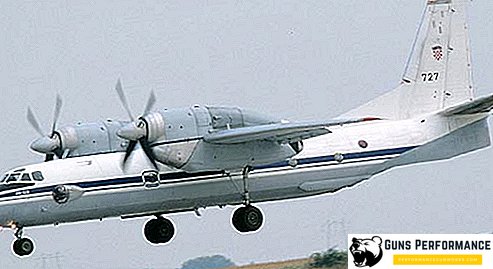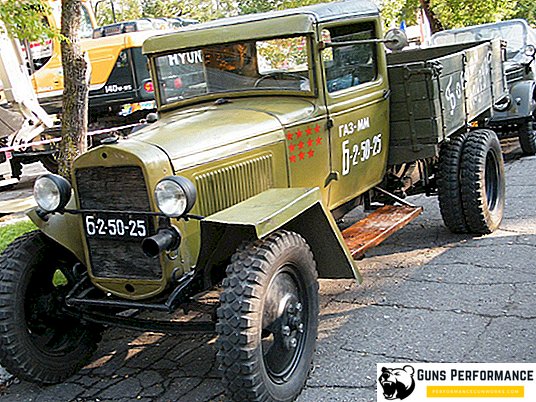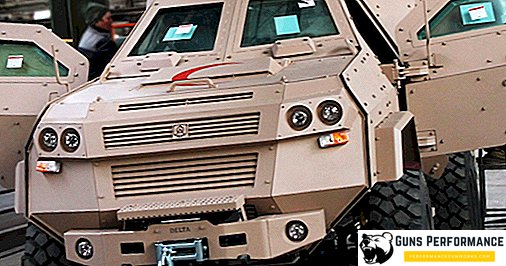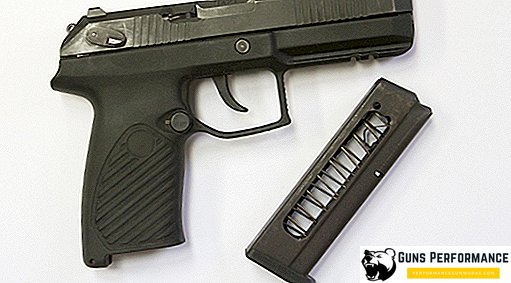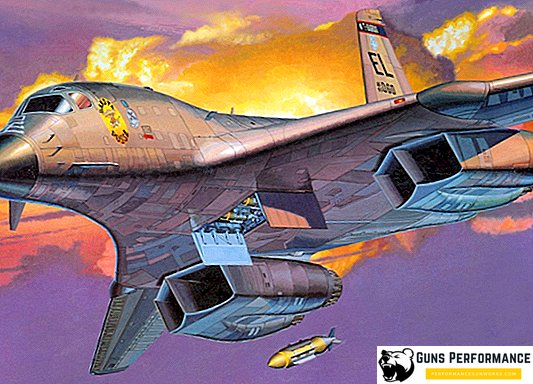
The Rockwell B-1 Lancer ("Ulan") is an American strategic supersonic bomber created during the Cold War and still in service with the US Air Force. The aircraft has a variable swept wing.
The developers of the machine were guided by the concept of breaking through enemy air defenses while flying on small ones with rounding of the terrain. The design of this aircraft is actively used technology to reduce radar visibility ("stealth").
The B-1 bomber was created primarily as a carrier of nuclear weapons. According to the developers, this machine was to replace the outdated subsonic Boeing B-52 Stratofortress. After the end of the Cold War, the B-1 bombers began retooling for the use of conventional weapons. In the mid-1990s, the B-1B Lancer was finally removed from the US strategic forces.
Modification of the B-1B bomber took part in almost all conflicts of the past decades, in which the US Air Force was involved. Over the entire period of operation, ten aircraft were lost due to technical malfunctions, but none of the bombers were shot down by the enemy. B-1B is the owner of several records for distance, speed and altitude. At present, the B-1B is the only aircraft in the US Air Force with a variable wing geometry.
In total, more than a hundred aircraft of various modifications were built. Currently, work is underway to upgrade the B-1B Lancer.

History of creation
Work on the creation of a new supersonic strategic bomber began in the United States in the late 50s. North American Aviation offered to replace the B-52 planes with a XB-70 Valkyrie bomber. This plane had six jet engines, could reach a speed of 3 Mach at an altitude of more than 20 km. Such characteristics made it virtually invulnerable to interceptor aircraft and anti-aircraft missiles of the USSR - the main potential enemy of the United States.
However, by the end of the 50s, the latest Soviet anti-aircraft missiles could already shoot down high-speed targets flying at high altitudes, as evidenced by the downing of the Gary Powers aircraft in 1960.
The Americans had to urgently change the tactics of the use of strategic bombers. A new way to overcome the Soviet air defense was the breakthrough of aircraft at low and ultra-low altitudes. Such tactics gave attacking aircraft a number of advantages:
- the detection distance of a bomber by radars decreased;
- low-level anti-aircraft missiles had low efficiency;
- low-flying targets were very difficult to determine by radar interceptors.
However, the XB-70 Valkyrie was poorly suited for low-altitude flights. He had to reduce speed to subsonic, which significantly reduced the radius of the use of the bomber. In addition, intercontinental ballistic missiles were very quickly improved, so the importance of strategic aviation gradually decreased. In 1961, President Kennedy ordered the closure of the Valkyrie program.
Work on the creation of a new strategic bomber began in the United States around the mid-60s (AMSA, later renamed B-1). In 1969, the US Department of Defense prepared an assignment for a new aircraft and sent it to various aircraft-building companies. The winner of the competition was North American Rockwell.

To carry out the tests planned to build four aircraft. The first flight of the new bomber took place in December 1974, in 1978 the B-1 reached a speed of Mach 2.2, and in 1979 the pre-production sample B-1 was ready. However, two years earlier, American President Carter announced the termination of funding for the B-1 program. Despite the official closure, the flight tests of the aircraft were not terminated.
The B-1 program, five years later, was resumed by the next US president, Ronald Reagan. Already in 1981, it was officially announced plans to purchase one hundred B-1B Lancer bombers for the US Air Force. This modification was somewhat different from the first four aircraft created in the first stage of the program.
The new aircraft had a reinforced chassis and airframe design, which made it possible to increase its maximum take-off load, unregulated air intakes, and in the manufacture of the B-1B, stealth technology was used. Changes were made to the weapons bay. We can say that the B-1B concept was implemented to the maximum extent possible to break through enemy defenses at low altitudes.

The first B-1B serial bomber took off in 1984, and the next year these vehicles began to enter the army.
Initially, the main armament of the aircraft were AGM-69 SRAM airball ballistic missiles or nuclear bombs of different power. A little later, bomber suspension nodes were installed for strategic cruise missiles.
In 1992, the B-1B re-equipment program with the more advanced AGM-131A SRAM-2 aeroballistic missiles began, but they were never brought to completion.
In the mid-90s, the aircraft was withdrawn from the strategic forces of the United States, and its conversion began to use conventional ammunition.
Due to technical issues related to the inability to use conventional weapons, B-1B bombers did not participate in Operation Desert Storm in 1990. However, in the next operation against Iraq (Fox of the Desert, 1998), these planes were already used; they launched several bomb attacks from high altitudes.
The US Air Force used the B-1B Lancer to bombard the territory of Yugoslavia in 1999. The "Ulan" was actively used during the second war in the Persian Gulf (2003). B-1B delivered rocket-bombing attacks on the territory of Libya in 2011, at present these planes are being used by the Americans for bombing groups of the Islamic state in Syria and Iraq.
The Americans are planning to modernize B-1B bombers in order to keep these vehicles in service at least until 2038.

Device
B-1B is made according to the normal aerodynamic design, the aircraft has a low-wing with variable sweep and a high-lying horizontal tail. Layout B-1B - integral.
The fuselage of the aircraft is a semi-monococcus with a large number of frames and spars, its skin is made of aluminum alloys. The fuselage is divided into five main sections.
Aircraft wing caisson with two spars.

Chassis B-1B - three-post, the main pillars have four wheels, the front - two.
The aircraft is equipped with four engines F101-GE-102 installed in the engine nacelles under the fixed part of the wing.
The crew of the B-1B Lancer bomber consists of four people: two pilots and two operators. The entrance to the cab is located behind the front landing gear.
The B-1B’s main weapons are guided missiles (eight AGM-86B ALCM or twenty-four AGM-69A, AGM-131A of air-to-air class) or nuclear bombs of different power. Armament is placed in three bomb bay on drum launchers.
When creating the aircraft, technologies for reducing its radar visibility were actively used. Reducing the EPR bomber is achieved through special radio-absorbing coatings, changes in the design of the engine nacelles, metallization of the cockpit glazing, changes in the radar antenna tilt and other design solutions.

Specifications
| Crew | 4 people |
| Aircraft length | 44.81 m |
| Aircraft height | 10.36 m |
| Max speed | 1328 km / h |
| Practical range | 12,000 km |
| Wing load | 1,194.1 kg / m2 |
| Combat load | 56700kg |
| Engine | 4 × TRDFF F101-GE-100 |



